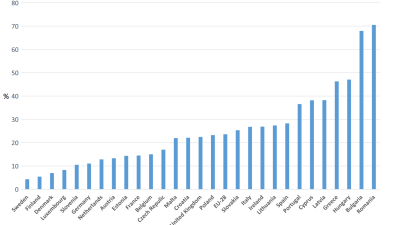Counting the number of people living in poverty worldwide is difficult, says a new paper, but there are a number of things that can be done to improve the quality of data.
The paper comes from an independent organisation focusing on the analysis and use of data for the elimination of absolute poverty. It explains how global poverty numbers are obtained; explores weaknesses in the data; and describes the underlying constraints on improving data. It concludes by looking at solutions to these problems, as well as changes in the scope of, and demand for, poverty data.
Key points
- Counting the number of people living in poverty worldwide involves facing up to a number of difficult technical, resource, co-ordination and institutional challenges.
- The availability and quality of poverty data have improved dramatically over the past two decades. At the same time, however, certain weaknesses within the data have crystallised. These are linked to the reliability of household surveys, adjustments for prices, and timeliness and frequency issues.
- There is scope to significantly improve the quality and usefulness of poverty data through a combination of immediate reforms and longer-term investments.
- Promising avenues for revolutionising how poverty is counted include: polls of self-reported financial hardship; big data from cell phone activity and search engine entries; and satellite imagery. However, the viability of these approaches remains largely unproven and therefore speculative.
- A more fruitful approach is to modify the current methodology or make it work better. Three areas highlighted in the paper are: harmonising survey design and protocols; publishing provisional 'real time' poverty estimates at a global and country level; and reforming the governance of poverty data at a country level.
Source: Laurence Chandy, Counting the Poor: Methods, Problems and Solutions behind the $1.25 a Day Global Poverty Estimates, Development Initiatives
Link: Paper



 PSE:UK is a major collaboration between the University of Bristol, Heriot-Watt University, The Open University, Queen's University Belfast, University of Glasgow and the University of York working with the National Centre for Social Research and the Northern Ireland Statistics and Research Agency. ESRC Grant RES-060-25-0052.
PSE:UK is a major collaboration between the University of Bristol, Heriot-Watt University, The Open University, Queen's University Belfast, University of Glasgow and the University of York working with the National Centre for Social Research and the Northern Ireland Statistics and Research Agency. ESRC Grant RES-060-25-0052.






